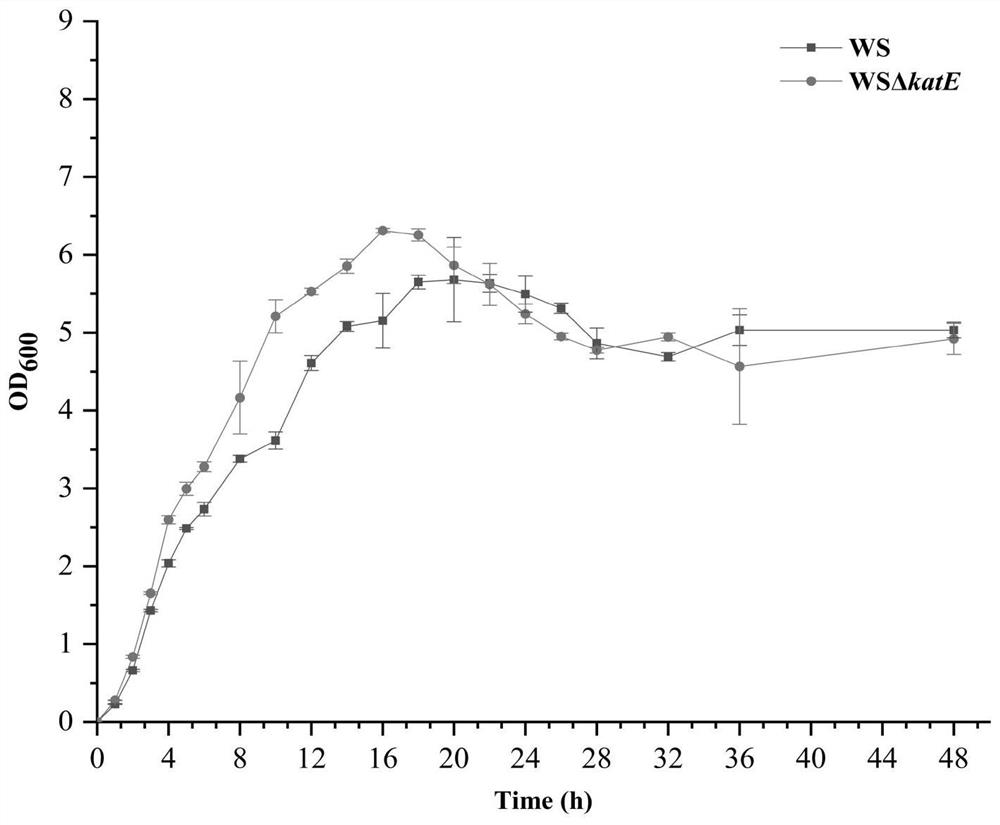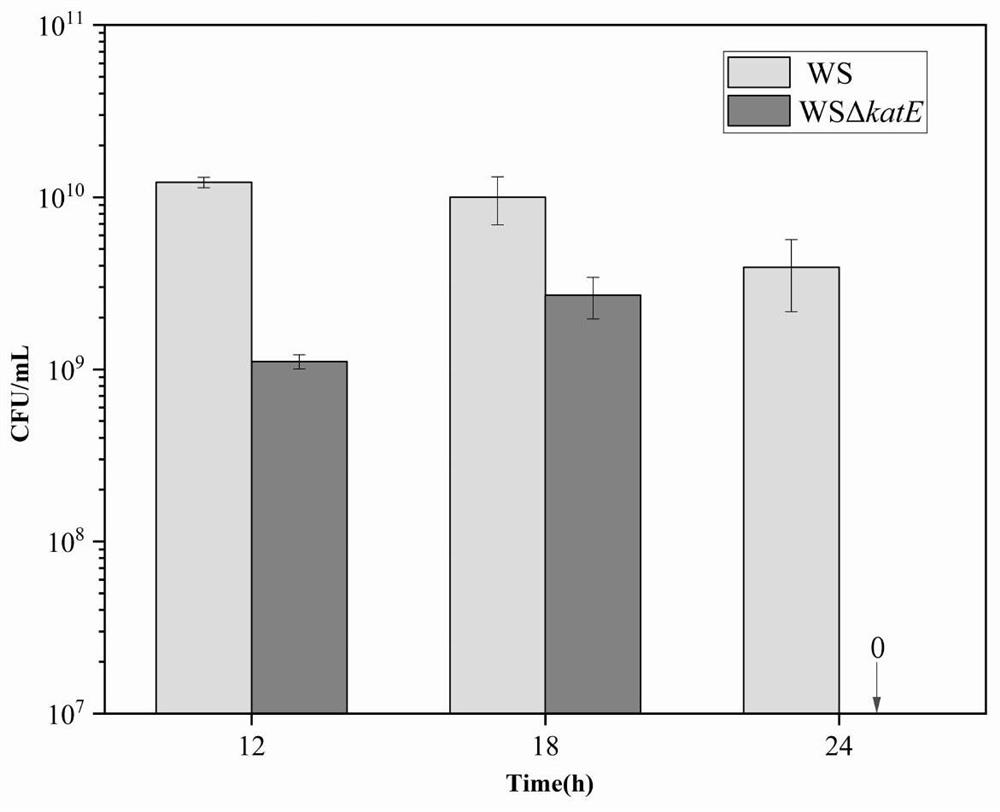Gene-deleted Aeromonas intermedius
A technology of Aeromonas and gene deletion, which is applied in the field of microorganisms, can solve the problems of lack of model organisms, and achieve the effect of simplifying operations and saving costs
- Summary
- Abstract
- Description
- Claims
- Application Information
AI Technical Summary
Problems solved by technology
Method used
Image
Examples
Embodiment 1
[0048] Example 1: Obtaining of Aeromonas intermediate WS (Aeromonas media WS) ΔkatE
[0049] 1. Construction of knockout vector
[0050] Using the WS genome as a template, amplify the upstream homology arm of the katE gene with the katE upstream forward primer shown in SEQ ID NO.1 and the katE upstream reverse primer shown in SEQ ID NO.2, using such as SEQ ID The katE downstream forward primer shown in NO.3 and the katE downstream reverse primer shown in SEQ ID NO.4 are amplified to obtain the downstream homology arm of katE gene, and the upstream homology arm is used restriction endonuclease SalI and Cut with XbaI, cut the downstream homology arms with restriction endonucleases XbaI and SacI, then cut the vector pDM4 with restriction endonucleases SalI and SacI at both ends, then connect the upper and downstream homology arms and the vector fragment with T4 Enzymes connect. The obtained ligation product was transformed into Escherichia coli competent, and the transformants ...
Embodiment 2
[0053] Embodiment 2: the growth curve of bacterial strain and melanin synthetic curve assay
[0054] Pick single colonies of Aeromonas intermedius WS and WSΔkatE, inoculate them into 5 mL of fresh liquid LB medium respectively, cultivate the activated cells at 30°C and 200 rpm overnight, and inoculate the above bacterial liquid with an inoculation amount of 1% (v / v). Transfer to a 250mL Erlenmeyer flask filled with 100mL liquid LB medium, culture at 30°C and 200rpm for 4h, start sampling every 2h until 48h, measure and record the OD 600 value and OD 400 value, in OD 600 Reflect its growth, in OD 400 The value represents its melanin synthesis yield. Taking culture time as abscissa, OD 600 Draw the growth curve as the ordinate, and take the culture time as the abscissa, OD 400 Plot the melanin synthesis curve for the abscissa and ordinate.
[0055] Its growth curve showed that WSΔkatE had no significant difference from wild-type WS growth curve, and its melanin synthesis c...
Embodiment 3
[0056] Embodiment 3: bacterial strain cultivates 12h-24h live bacterial count change
[0057] Pick single colonies of Aeromonas intermedius WS and WSΔkatE, inoculate them into 5 mL of fresh liquid LB medium respectively, cultivate the activated cells at 30°C and 200 rpm overnight, and inoculate the above bacterial liquid with an inoculation amount of 1% (v / v). Transfer to a 250mL Erlenmeyer flask filled with 100mL liquid LB medium, and cultivate on a shaker at 30°C at 200rpm. Using the plate colony counting method, the strains were cultured until 12h, 18h, and 24h, and the bacterial liquid was taken separately for gradient dilution, and three appropriate dilution gradients were selected, and 100μL was used to coat the plate with glass beads, and cultured at 30°C for 12h. Count the effective plates with 30 to 300 colonies, calculate the average number of colonies on three plates of the same dilution, and calculate according to the following formula: Colony forming unit (CFU) pe...
PUM
 Login to View More
Login to View More Abstract
Description
Claims
Application Information
 Login to View More
Login to View More - R&D
- Intellectual Property
- Life Sciences
- Materials
- Tech Scout
- Unparalleled Data Quality
- Higher Quality Content
- 60% Fewer Hallucinations
Browse by: Latest US Patents, China's latest patents, Technical Efficacy Thesaurus, Application Domain, Technology Topic, Popular Technical Reports.
© 2025 PatSnap. All rights reserved.Legal|Privacy policy|Modern Slavery Act Transparency Statement|Sitemap|About US| Contact US: help@patsnap.com



